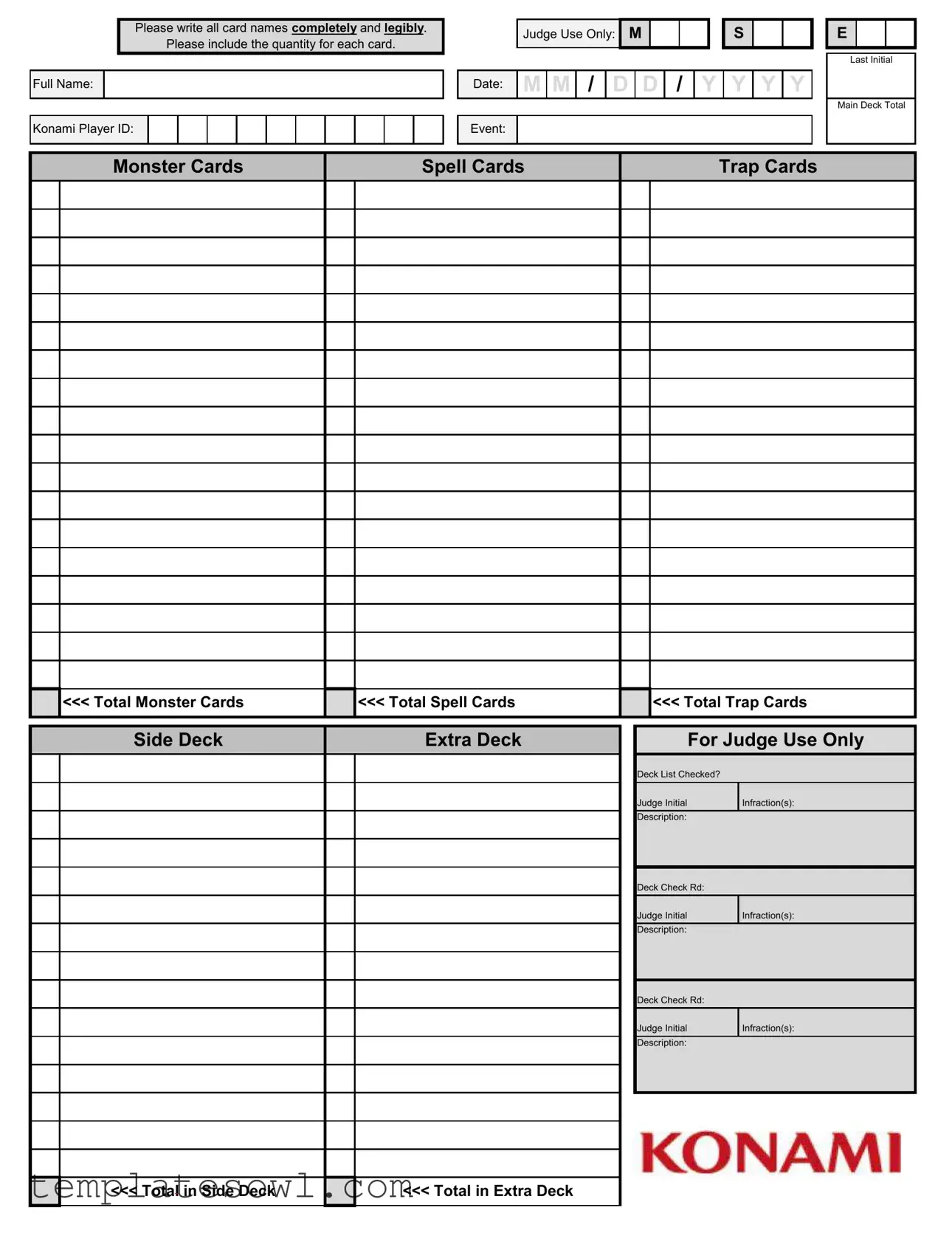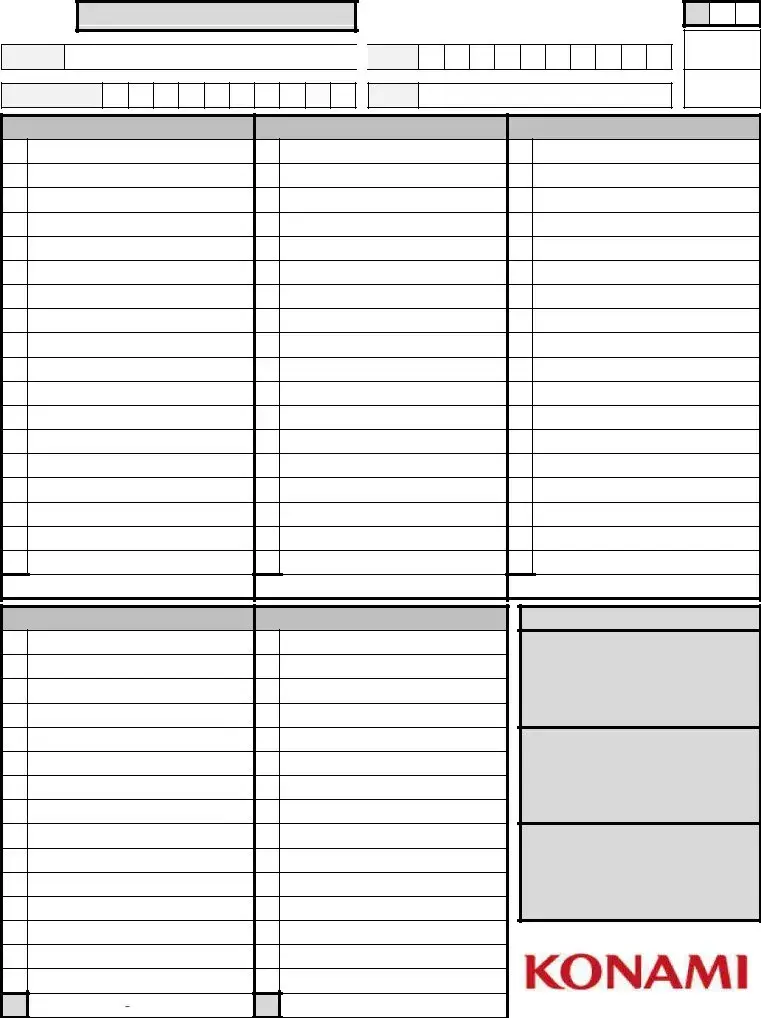What is the purpose of the Konami Decklist form?
The Konami Decklist form is designed to help players organize and submit their deck lists for official events. It ensures that all card information is accurately recorded and can be easily reviewed by judges. Additionally, it facilitates fair play by maintaining a clear record of the cards being used during the competition.
How should I fill out the card names on the form?
It is important to write all card names completely and legibly on the form. This means using full names without abbreviations or shorthand. Clear handwriting is essential to avoid misunderstandings and ensure that judges can read the information without confusion.
What information do I need to provide beyond card names?
In addition to the card names, you must include the quantity for each card listed. The form also requires your full name and your Konami Player ID, which helps in identifying players. Furthermore, the form collects event details, such as the date and the specific event you are participating in.
What sections are included in the form for managing different card types?
The form includes distinct sections for Main Deck, Side Deck, and Extra Deck. Each section identifies the total number of Monster, Spell, and Trap cards. This structured format helps ensure that players adhere to the deck-building rules set forth by Konami and are aware of their card distributions.
What do I do if I have an infraction noted by a judge?
If a judge identifies an infraction during a deck check, they will document it on the form. Players can address the infraction in accordance with the rules provided for the event. It is recommended to understand the specific infraction and take corrective action to avoid further complications in the event.
Is the Decklist form checked after submission?
Yes, the Decklist form goes through a verification process. Judges will check the decklist for accuracy and compliance with the established tournament rules. Confirmation of whether the deck has been checked will be noted on the form, providing an added layer of accountability.
What happens if I forget to fill in a section of the form?
Forgetting to fill in a section can lead to complications during the event. It is crucial to review the completed form before submitting it. Missing sections may result in delays, penalties, or even disqualification, depending on the event's rules. Careful attention to detail can help prevent these issues.
How do I calculate totals for my deck?
You will need to count the number of cards in each category: Main Deck, Side Deck, and Extra Deck. The form provides spaces for listing these totals, allowing you to keep track of how many Monster, Spell, and Trap cards you have. Ensuring that these totals match the expected structure of a legal deck is crucial for compliance.
Can I use the Decklist form for non-Konami events?
While the Konami Decklist form is specifically designed for Konami-sanctioned events, players may choose to use a similar format for non-Konami events, provided it meets the requirements set by those organizers. However, it’s essential to check the specific rules of any event to ensure compliance with their deck submission procedures.




 <<< Total Monster Cards
<<< Total Monster Cards <<< Total Spell Cards
<<< Total Spell Cards <<< Total Trap Cards
<<< Total Trap Cards